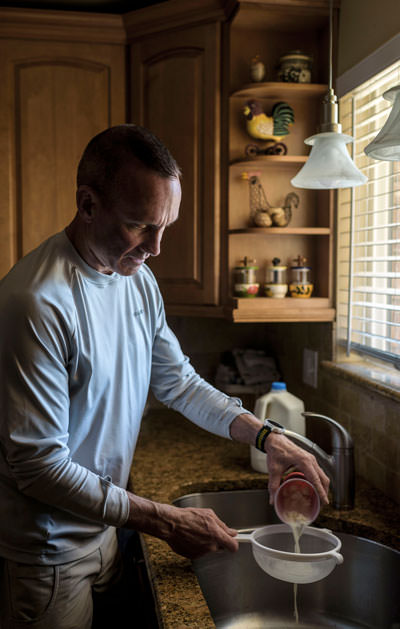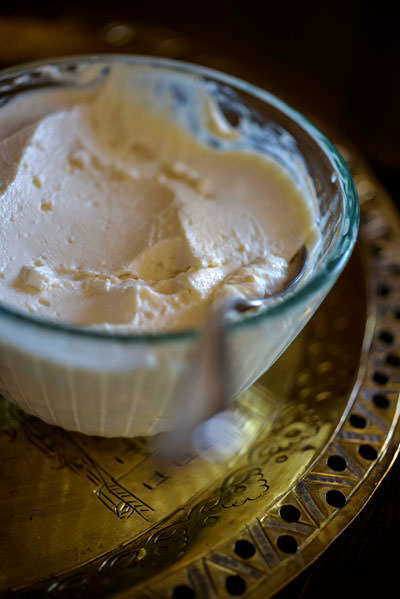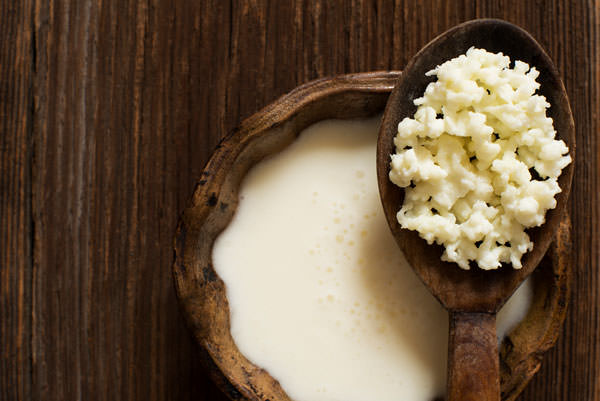This amazing, probiotic-rich concoction may not be on your radar – but it ought to be.
Let’s face it, kefir is like the redheaded, probiotic stepchild — unknown or misunderstood. Either you’ve never heard of it or you think it’s just drinkable yogurt. Guess again.
Basically, yogurt and kefir are variations on a theme. Both are cultured, fermented milk products, rich in vitamins, nutrients, and probiotics and offering a variety of health benefits. But that’s where the similarity ends.
Comparing kefir to yogurt is like comparing Batman to Robin. While both products contain good bacteria, kefir is the one that packs the true powerhouse probiotic punch. Kefir provides a far greater number, and a much wider diversity, of healthy bacteria. It also offers beneficial yeasts that are absent from yogurt.
Beaucoup benefits
Historically, kefir always has been linked to good health. It can be traced back to the Caucasus Mountains, at least 1,000 years ago, where it was credited with providing long, healthy, disease-free lives to residents, many living to 100.
For years, kefir has been used by health food advocates for its anecdotal properties, especially for resolution of gastric problems and its ability to be digested by lactose-intolerant people, among other healthful properties.
Although long ignored by medical science, this traditional beverage is now recognized by researchers as an excellent source of probiotics, offering numerous health benefits. According to a detailed recap of recent scientific studies, published in the U.S. National Institutes of Health’s National Library of Medicine, kefir has been shown to have potent antibacterial, anti-inflammatory, and antioxidant properties. Additionally, numerous animal studies have demonstrated kefir’s ability to lower blood pressure and cholesterol levels, deter tumor growth, and promote wound healing.
A grain of truth
Amazingly, you can make this mini-miracle potion in your own kitchen, overnight. It’s simple to do, the ingredients are minimal, and the process is easy. But it does require something special — milk kefir grains. These small living organisms, which resemble cauliflower florets more than grains, are all that’s needed to convert ordinary milk into a powerful probiotic potion. Put a few grains in a glass jar, add milk, cover, and set aside. In about 24 hours, you have kefir. Before enjoying your wonder beverage, strain out those grains, put them in a new jar, add milk, and start all over again.

Todd Goatley-Sears strains his kefir grains from the whole milk they’re stored in. He repeatedly uses the grains to make new batches of kefir.
Photo by Candice Vivien
“The kefir grains do all the work; I’m just an observer,” says Todd Goatley-Seals, a local kefir advocate whose been making his own for the past three years. “You can reuse them forever. If you take good care of them, they’ll take good care of you.”
Why make your own?
First of all, it’s so easy. Secondly, it’s a lot cheaper than buying it. But, most importantly, the end product is far superior to the commercial version, which is heat processed and contains added sugars, flavorings, and preservatives. As a result, it has a fraction of the good microbes found in the homemade version.
Also, you can customize your own, adding honey, maple syrup, stevia, coconut, fresh fruit … the sky’s the limit. And you can make other products from it, from salad dressing to smoothies to ice cream. There are plenty of recipes online to get you started.
Goatley-Seals loves to over-ferment his kefir to get a super-thick, creamy result, which he then flavors and sweetens to use as filling for key lime kefir pie or banana kefir pie, both family favorites.
Teisha Bronner is the owner of Living Mountain School in Reno, which offers workshops in various aspects of healthy living, including all types of fermentation. Bronner is a kefir advocate and particularly enjoys making her own kefir cheese and butter.
“Making kefir is more of an art,” Bronner says. “The grains take care of the science part. You just need to dive right in, experiment, and figure out what pleases your palate.”
Reno writer Barbara Twitchell would like to thank Todd Goatley-Seals and Teisha Bronner for sharing their knowledge and experience. An added thanks to Todd for giving her some of his kefir grains.
The Internet is full of kefir websites and tutorials. Goatley-Seals and Bronner recommend these:
Cultures for Health
Culturesforhealth.com/learn/milk-kefir/how-to-make-milk-kefir
Dom’s About Kefir Grains and Kefir
Users.sa.chariot.net.au/~dna/kefirpage
To purchase live kefir grains, visit Amazon, Craigslist, or post a request on a local resource such as Reno Foodies on Facebook.
Freeze-dried kefir starter, which also can be used to make kefir, is available at the Great Basin Community Food Co-op in Reno. For details, visit Greatbasinfood.coop.

Unlike the liquid kefir frequently found in stores, Goatley-Sears’ kefir is thick and creamy enough to eat with a spoon.
Photo by Candice Vivien
Basic Kefir
using active milk kefir grains*
(courtesy of Teisha Bronner, fermentation instructor in Reno. Makes 1 quart)
Supplies
2 clean glass 1-quart jars
Paper coffee filter, paper towel, or tight-weave cheesecloth to cover fermentation jar
Rubber band to keep cover in place
Mesh strainer (must be plastic, nylon, or non-reactive metal such as stainless steel)
Plastic or glass bowl
Wooden or stainless-steel, slotted spoon
Ingredients
1 to 2 tablespoons active milk kefir grains (adjust according to degree of sourness you prefer)*
4 cups milk (can use any kind — whole, 2 percent, or fat free)
Place active kefir grains in clean jar. Add milk. Cover and set aside, out of direct sunlight (Bronner leaves it on a corner of her kitchen counter). Swirl it around occasionally, if you remember. It helps the fermentation process. When it thickens slightly to a creamy consistency — usually about 24 hours, depending upon room temperature and ratio of grains to milk — it’s ready.
Pour through mesh strainer to separate kefir from grains. Pour kefir into clean jar. It can be consumed immediately or covered and refrigerated for later use. Place grains in new container and add fresh milk to start a new batch of kefir.
Important note If you don’t want to make a new batch right away, cover kefir grains with whole milk to feed them and place them in refrigerator for later use. Remember, they are living organisms. Replace the fresh whole milk weekly, keeping the grains well fed and refrigerated until making your next kefir.
*If using dehydrated or freeze-dried grains, follow directions on packet.
Kefir Butter
(courtesy of Teisha Bronner, fermentation instructor in Reno. Makes about 1 cup)
1 pint heavy cream
1 tablespoon freshly made kefir (not kefir grains)
Salt, to taste
Place cream in a bowl and add kefir. Cover container with a paper towel or cheesecloth and secure with rubber band. Leave out at room temperature for 24 hours. The cream will become thick like Greek yogurt. Place cultured cream in the fridge for 3 to 8 hours. Place chilled cream in a food processor, and process on high.
The cream will first turn into whipped cream, next a grainy texture will appear, and finally the cream will separate from the liquid. The solid mass is your butter and the liquid is buttermilk. Strain the butter through a fine mesh strainer. Rinse the butter until liquid runs clear. Place a piece of parchment paper on the counter, then place the rinsed butter on top of the parchment paper and use a spatula to spread and squeeze out any remaining liquid. Add salt to taste, folding into the butter with spatula. You can now place the butter in a jar or use a mold to shape the butter. Refrigerate and enjoy!


